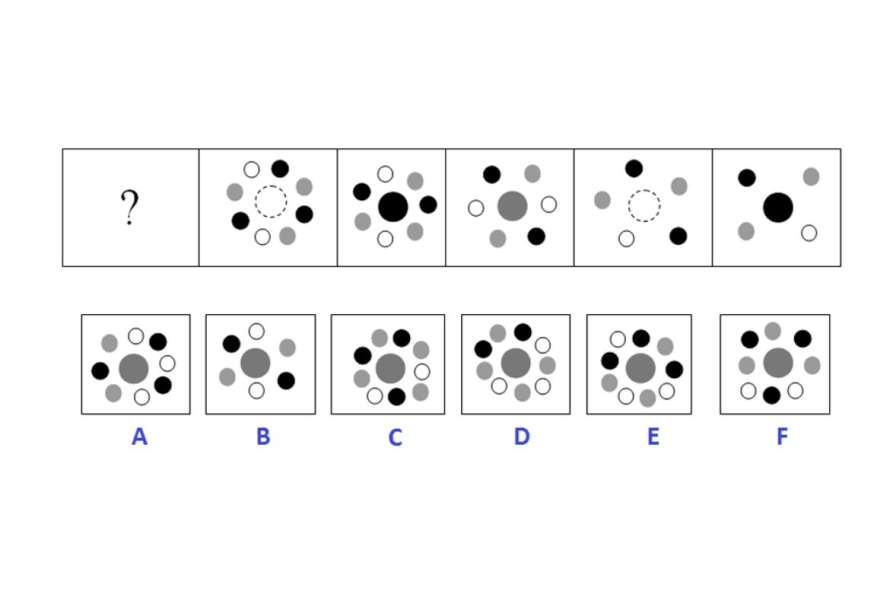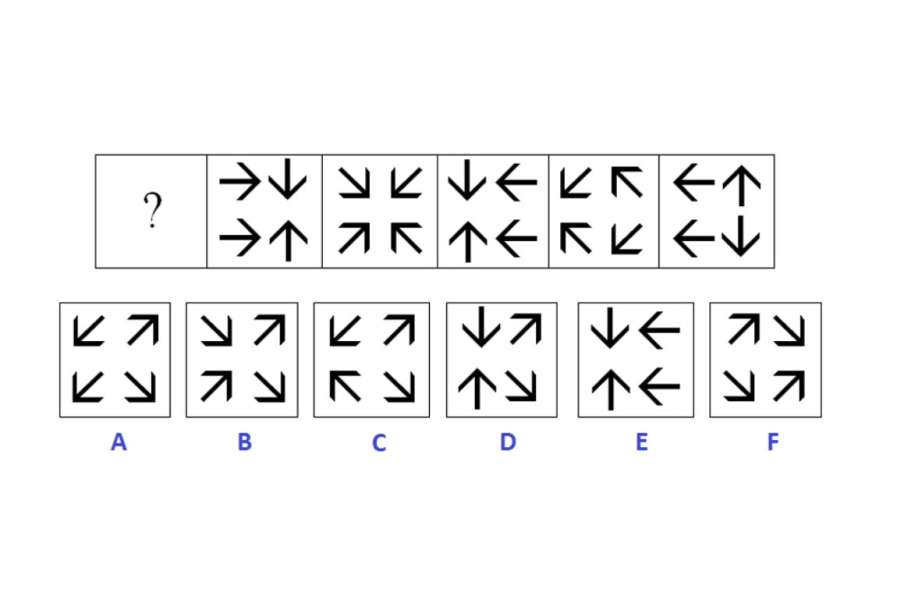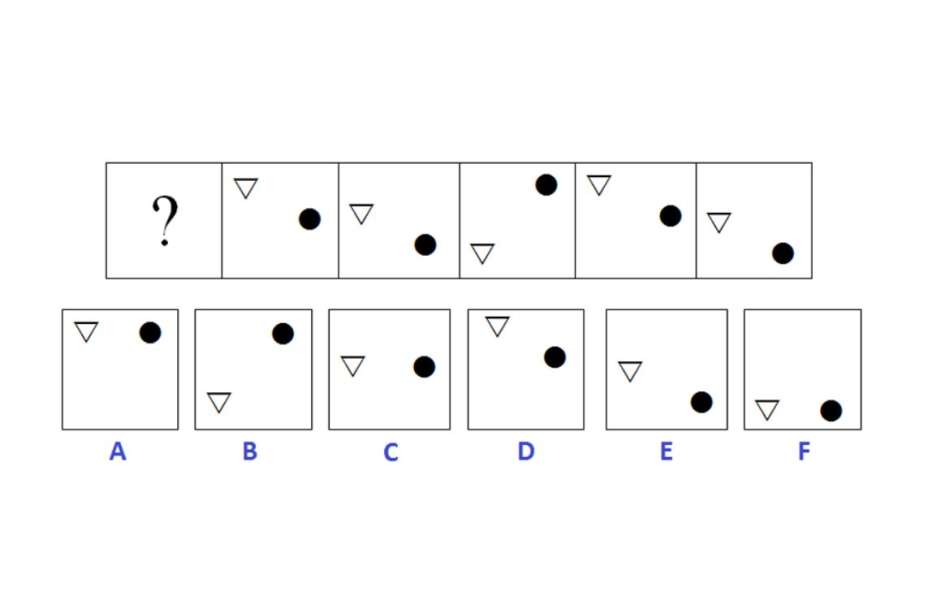Diagrammatic Reasoning Test With Answers
Free Diagrammatic Reasoning Test Questions and Answers
Welcome to our free diagrammatic reasoning test practice questions.
Here are a few diagrammatic reasoning test questions to practice to give you an understanding of what real diagrammatic reasoning tests will be like. The only way to tackle these types of tests and become good at them is to practice, so make the most of these free questions and use our explanations to help you improve your performance.
Q1) Which is the next logical image in the sequence?
A, B, C, D, E, F
Answer
There is a central circle surrounded by eight circles. The central circle changes colour from grey to having a dotted outline to black. At each step in the series one circle is removed in the order of white, black, grey circles. The order of the remaining circles is randomised.
Correct Answer; E
Q2) Which is the next logical image in the sequence?
A, B, C, D, E, F
Answer
There are four arrows. At each step in the series: the first arrow rotates 45-degrees clockwise; the second arrow rotates 45-degrees clockwise; the third arrow and the fourth arrow are reflections of the first two arrows in the horizontal plane.
Correct Answer; F
Q3) Which is the next logical image in the sequence?
A, B, C, D, E, F
Answer
There are two figures: a triangle and a circle. At each step in the series both the circle and the triangle move a step down a vertical line. As each shape reaches the bottom of a block it returns’ to the top of the next block.
Correct Answer; B
Q4) Which is the next logical image in the sequence?
A, B, C, D, E, F
Answer
There are three rows of three squares; one row in each square is black. At each step, every row moves down one place. The row which leaves the bottom of the block reappears at the top.
Correct Answer; D
Q5) Which is the next logical image in the sequence?
A, B, C, D, E, F
Answer
Each block in the series contains an arrow in each corner. At each step in the series two adjacent arrows reverse their direction. This process starts with the top left-hand corner and bottom left-hand corner arrows. Then the next two adjacent arrows - moving one figure anticlockwise – are the bottom left-hand corner and right-hand corner arrows.
Correct Answer; E




